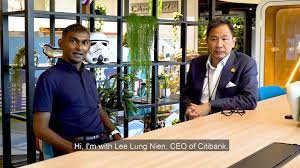Is HR An Architect Of Organisational Culture?

Photo above: Zulkifli Zainal, Sime Darby Group chief human resource officer, sharing about how Sime Darby is driving its cultural transformations.
Click play to listen to its corresponding podcast:
On Dec 1, 2015, more than 50 top human resources (HR) leaders across the country met up at the Sime Darby Leadership Centre to explore and discuss how HR needs to own the design and execution of an organisation’s culture.
Culture in business organisations is generally regarded by many as ‘touchy-feely’ stuff and has minimal business impact. It is very hard to define and many times, most relegate it to something that HR leaders need to manage.
When we think of organisational culture, offices like Google spring to mind where free food and video games abound. Some define culture as a Gen-Y fad where young folks get to have flexible working arrangements and dress up as they please.
The reality is that culture drives results. Culture should be a key business imperative just like marketing and supply chain management, driving a balanced scorecard. Why is this so?
Cultures are experiences that form beliefs. These beliefs drive behaviour and action. Ultimately, these actions that are translated from these beliefs will drive results. Your organisational culture could determine your results.
Thus, culture should be prioritised as an important business objective that is measured and rewarded. After all, culture is the identity and personality of your organisation.
Yet, in most organisations, HR leaders are left with the task to develop, design and execute on the culture strategy alone. Chief executive officers (CEOs) often ignore the importance of culture, much to their peril.
At this HR networking session, Citibank Bhd CEO Lee Lung Nien spoke on the importance of business leaders co-owning and driving strategic HR imperatives, including driving cultural change.
This might interest you: 4 Takeaway Lessons From Lee Lung Nien, Citi Malaysia CEO
Lee believes that many things on the HR leader’s plate, including leadership development, recruitment and organisational culture, are key business issues and CEOs need to personally be involved.
Lee himself shared how he gets involved even in the hiring process of entry-level management trainee. To him, the people agenda is a key business agenda. Thus HR leaders need to step up and be counted.
Lee spends a huge amount of his time on people and driving the right culture where others can thrive and grow.
Culture has to be intentionally designed and implemented, else it will be accidentally created. Every organisation will have a culture. If it is not intentionally designed, it will usually be created by the most disengaged employees.
Sime Darby Group chief human resource officer (CHRO), Zulkifli Zainal who gave the opening keynote address explained that Sime Darby, which has operations in numerous countries from China to other remote parts of the world, has embarked on driving cultural transformation across its entities.
As culture consists of behaviours, values, shared thoughts and aspirations of employees, stakeholders and leaders, it is of key importance to the success of Sime Darby.
Driving a singular culture across numerous entities and industries is not an easy task. Yet, Sime Darby has made its cultural imperatives a key part of the business strategy going forward.
The HR networking session had a panel of HR directors sharing their view on culture.
Peter Ling, director of HR and organisational development at Mah Sing Group Bhd shared that a huge part of an organisation’s culture is dictated by its CEO or its founder.
Yet, as organisations grow and mature, the current culture set by its founders may not be the right culture to take the organisation forward. Culture has to be dynamic and not static. It has to be ever evolving and changing. It has to be refreshed every three to five years.
Jenny Ooi, USG Boral senior vice president of HR, provided some practical tips for HR leaders who are starting on their transformation journey.
Before you attempt to “change your organisation”, start by building trust and credibility with your CEO and key stakeholders. With their trust and commitment, one can then engage in culture-building activities.
Charles De Brabant, Valiram Group CHRO shared some of his global experiences on how before setting out on a culture change journey, organisations must have a clear vision statement. Without a clear vision or goal, it would be pointless to create culture.
Every organisation should have a unique culture and it has to be dictated by the vision. Once there is clarity, it won’t be hard to intentionally create a culture to support that vision.
Datin Rowena Florece, director of HR at Microsoft Malaysia, shared how the company has evolved its culture recently. With new CEO Satya Nadella setting a clear vision of the future, HR could take the lead to design and “own” the culture space.
She viewed it as an opportunity for HR leader to step up, have a seat at the table and be counted as a business partner. However, this required understanding the business and driving the business agenda, and culture is a great business agenda.
Best practices for culture change
Joseph Tan, our resident culture expert shared three big ideas to consider when undertaking cultural initiatives.
1. Culture needs to be designed
Culture is ever-present – it is either by default or by design. According to Gallup, 24% of employees worldwide are actively disengaged versus 13% who are engaged.
Here are the implications – the default culture mode is usually dictated by the voice of the actively disengaged.
It is twice as loud! Your disengaged employees are dictating your culture.
Designing your organisational culture requires that you consider the following:
- Do you design the clarity of key results so that they are clearly understood by every employee?
- Do you design the capacity of your employees’ growth through systematic talent management?
- Do you design a consistent way to both reward and reprimand employees (bags on performance)?
2. Culture needs to self-destruct
While vision, mission and values for an organisation remains unchanged, organisational culture serves as a means to an end.
It ought to be refreshed every so often to ensure that it is still an enabler for achieving key results.
In the words of Marshall Goldsmith:
“What got you here won’t get you there.”
3. Culture needs to be deployed by great managers
The key factor affecting employee engagement is the quality of relationship with one’s direct supervisor. Thus, managers play a pivotal role in cascading any cultural transformation initiatives.
Without the manager’s ownership and deployment of the vision and culture, any change becomes an exercise in futility.
Final thoughts
Reflecting back where culture was the theme for the day, I knew that many organisations were shortchanging themselves by undermining the importance of intentionally designing and deploying culture for their organisation. Culture is powerful and can transform nations.
In 1992, I moved to New York City. New York at that point was one of the most dangerous cities in the world and considered by many as the “murder capital of the world” with the highest per capita murder rate.
By 1996, it was regarded as one of the safest cities in the world. How did that transformation happen? It was largely due to a culture change.
New York City Mayor Rudy Giuliani believed that culture was the key reason why crime was committed. Not bad people.
Instead of catching murderers and serious crime offenders, he and his team focused on the city’s subway system. In eliminating petty crime, they fixed all broken windows and cleaned up graffiti.
Related post: Just Fix Your Broken Windows
They worked tirelessly to catch folks who did not pay $1.25 for their subway fares. With the subways looking cleaner and petty crime being eliminated, it created an impression that crime was not the “culture” of the city.
Within a few years, it started to yield its results. It was not a result of focusing on eliminating “big” criminals or having special crime prevention programmes.
It was as simple as cleaning up the image of the city, creating a new “culture” which was visible and soon embraced in the city.
Your organisation can be transformed. The key is to intentionally create the “right” culture for your organisation. Focus on culture and be amazed by its results.
Roshan had a great time at the HR networking session and looks forward to the next session next quarter. Contact him at roshan.thiran@leaderonomics.com. For more HR Talk articles, click here.
Functional
Tags: Be A Leader, HR
Roshan is the Founder and “Kuli” of the Leaderonomics Group of companies. He believes that everyone can be a leader and "make a dent in the universe," in their own special ways. He is featured on TV, radio and numerous publications sharing the Science of Building Leaders and on leadership development. Follow him at www.roshanthiran.com






